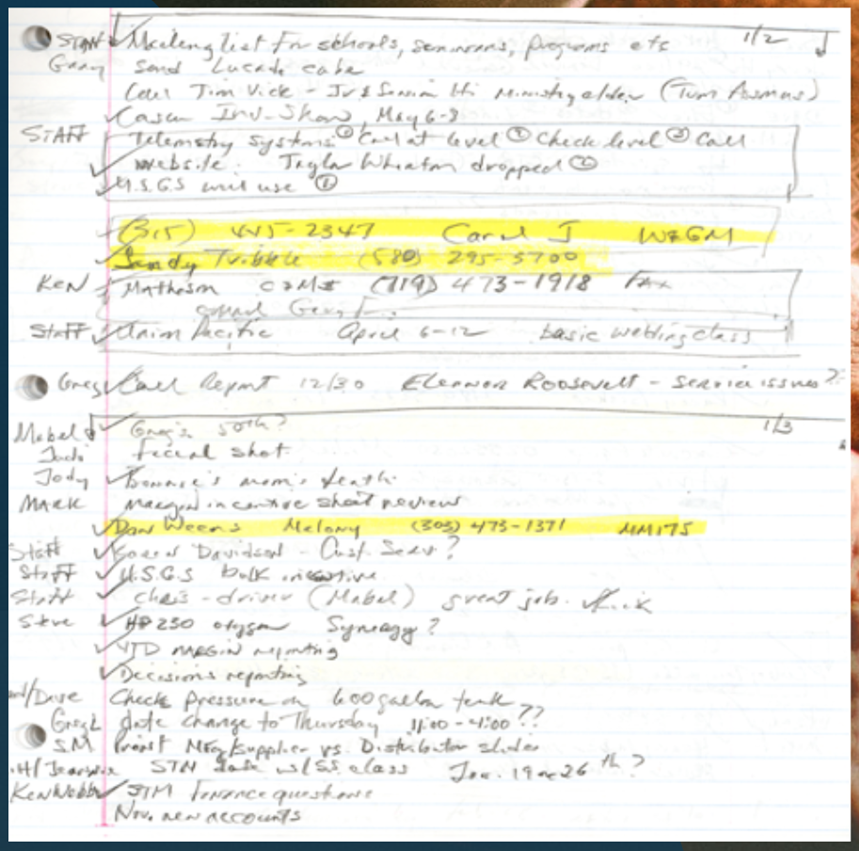Entering all pertinent business-related information in a daily journal is an invaluable tool. It allows you to be organized in your approach to each task as you work your way through the day. In my long career as senior vice president for sales at a distributorship, my journal served as an important tool in helping to shepherd the growth of our company.

Six actions
Here is an example of a single-page entry from my journal. It describes six actions I recommend you take with your journal.
- Date each day with a pencil and draw a line across the page. In this example, I have done so in two places. I like to add down arrows to further distinguish it as a new day.
- Bring forward unfulfilled previous requests and add them in the left column. Notice the entries for “STAFF” and their notes related to scheduled staff meetings. “Gary” serves as a reminder to send the company’s past president a New Year’s gift. The entries for “Ken” and “Greg” are notes regarding a supplier and a salesperson, respectively.
- List messages and requests including phone calls. When a noteworthy call or personal visit from a potential supplier or customer occurs, be sure to record their phone number and email address. This avoids losing hours trying to recall an encounter later when you might need it.
- Highlight important figures and numbers. This includes pricing or facts that aren’t necessarily transferred to other documents. Highlighting makes entries easier to find.
- Check off all finished business. At the end of the day, review your entries and checkmark those you have completed. This generally brings great satisfaction.
- Date journals when completed. Depending on your daily activity, your journal may take six months to a year to fill. Date them when they are complete and save them for future reference. They are a valuable resource.
Commit to journaling
When business owners complain that they can’t get their projects completed, I often find they don’t use a journal to record their distractions. Record your thoughts and stay focused on what needs to be done next. Using these six easy steps, make a commitment to journaling.
Get tips and tricks like the above in The Art of Sales books. Or subscribe to the FREE monthly articles here.

